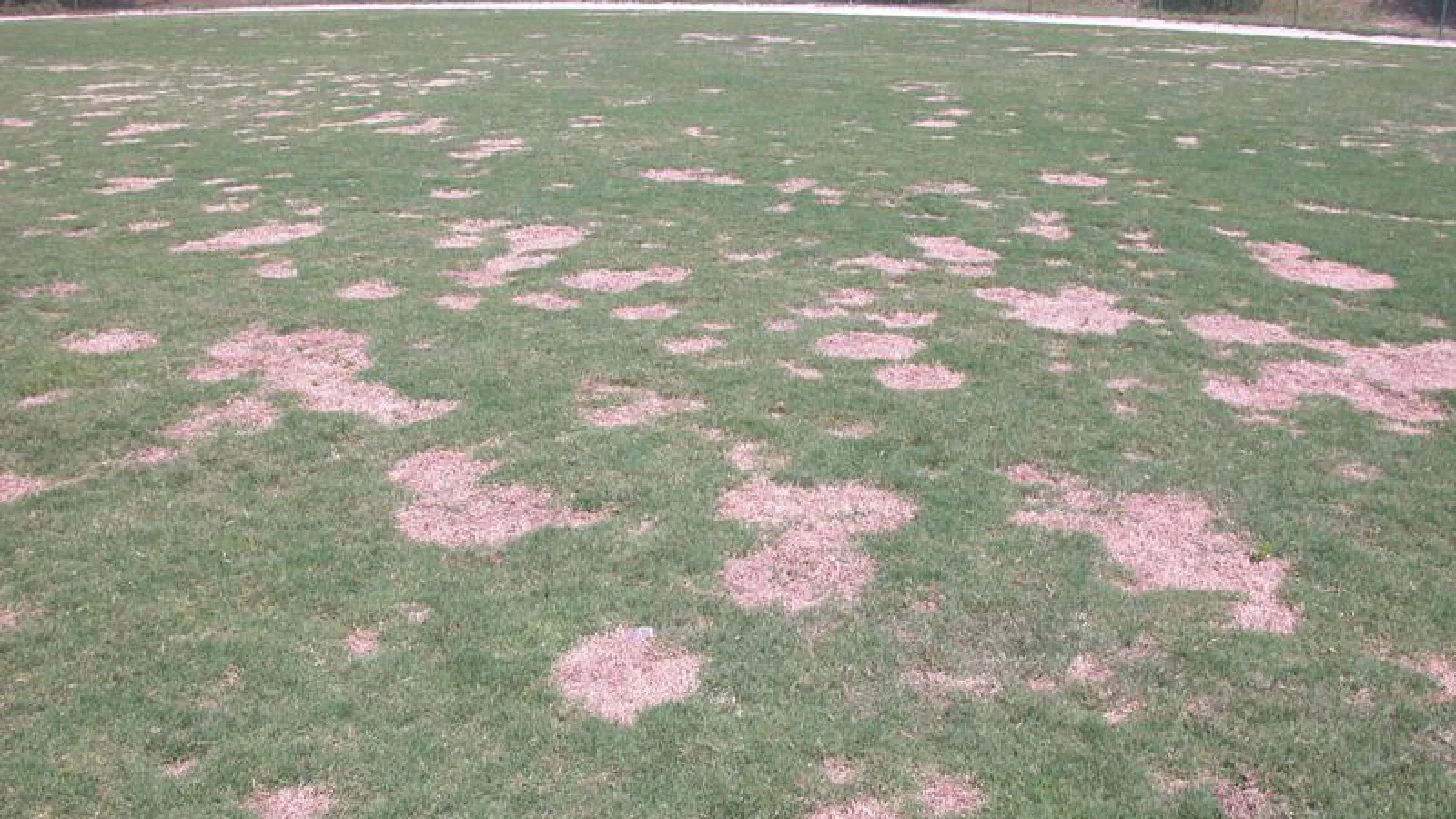Lawn Disease Library
Common Lawn Diseases
Lawn diseases and fungi can wreak havoc on your lawn. Learn more about common lawn diseases.
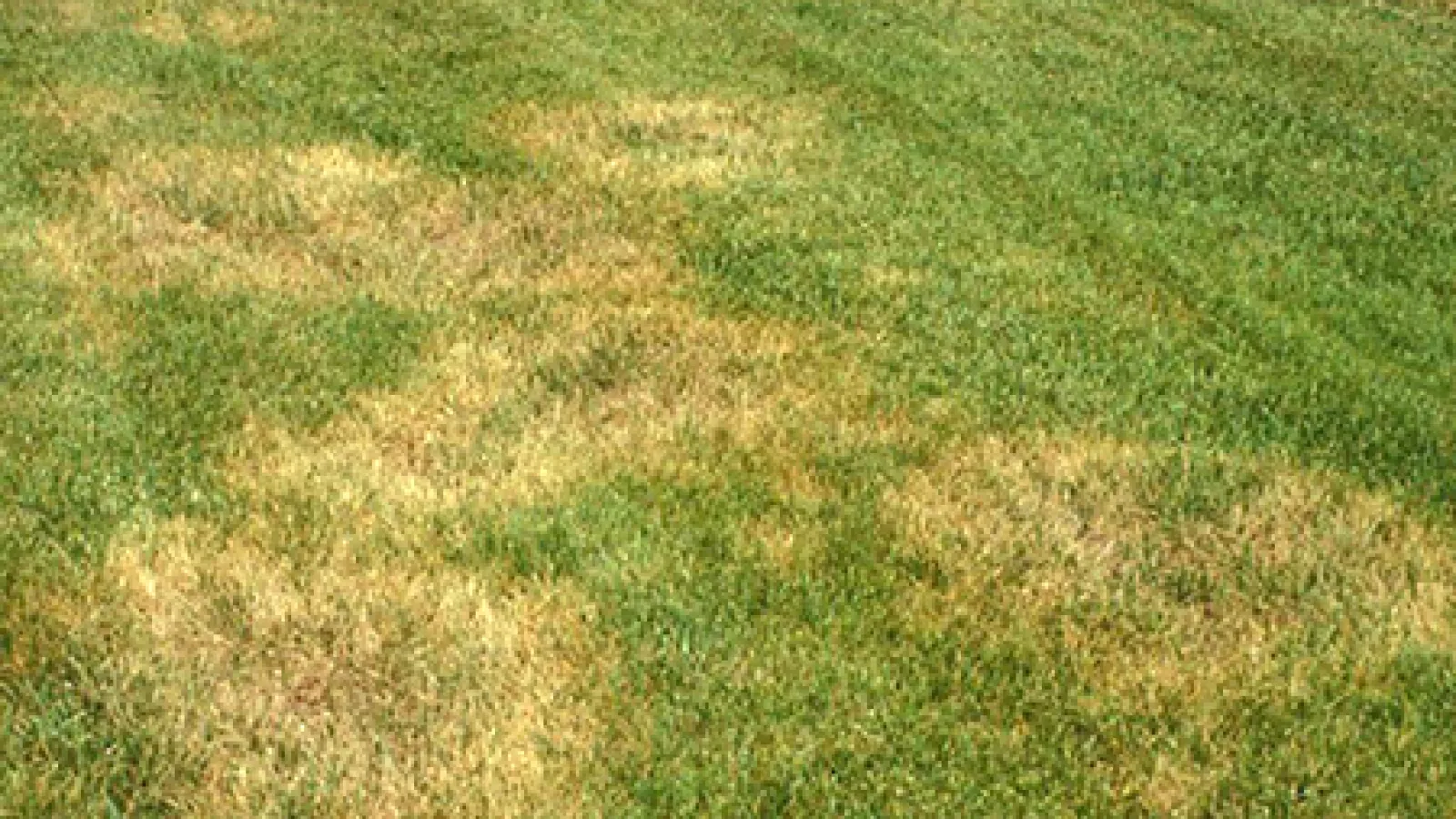
Brown Patch
- Found in Fescue
- Active late spring to early summer
Brown Patch fungus survives by feeding on the dead organic matter in the soil, but it will attack grass when the right environmental conditions arise. It first appears as circular areas of brown and dead grass surrounded by a narrow, dark ring.
- Active late spring to early summer
Brown Patch fungus survives by feeding on the dead organic matter in the soil, but it will attack grass when the right environmental conditions arise. It first appears as circular areas of brown and dead grass surrounded by a narrow, dark ring.
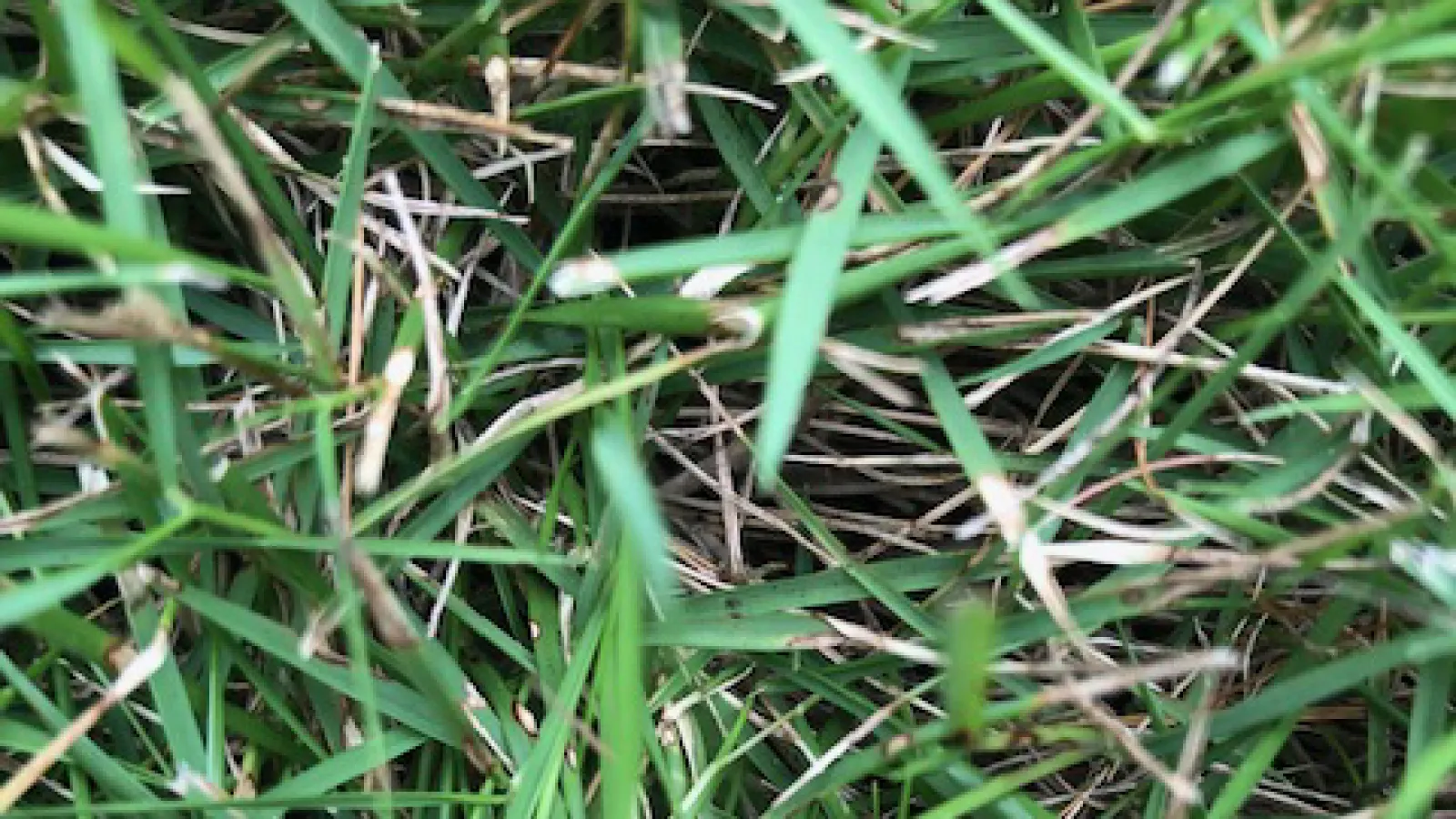
Dollar Spot
- Found in Bermuda, Fescue and Zoysia
- Active late spring through early fall
Dollar spot starts as small, circular, straw‑colored, sunken patches about two to six inches in diameter. The circular patches are typically the size of a silver dollar, where the disease gets its name.
- Active late spring through early fall
Dollar spot starts as small, circular, straw‑colored, sunken patches about two to six inches in diameter. The circular patches are typically the size of a silver dollar, where the disease gets its name.
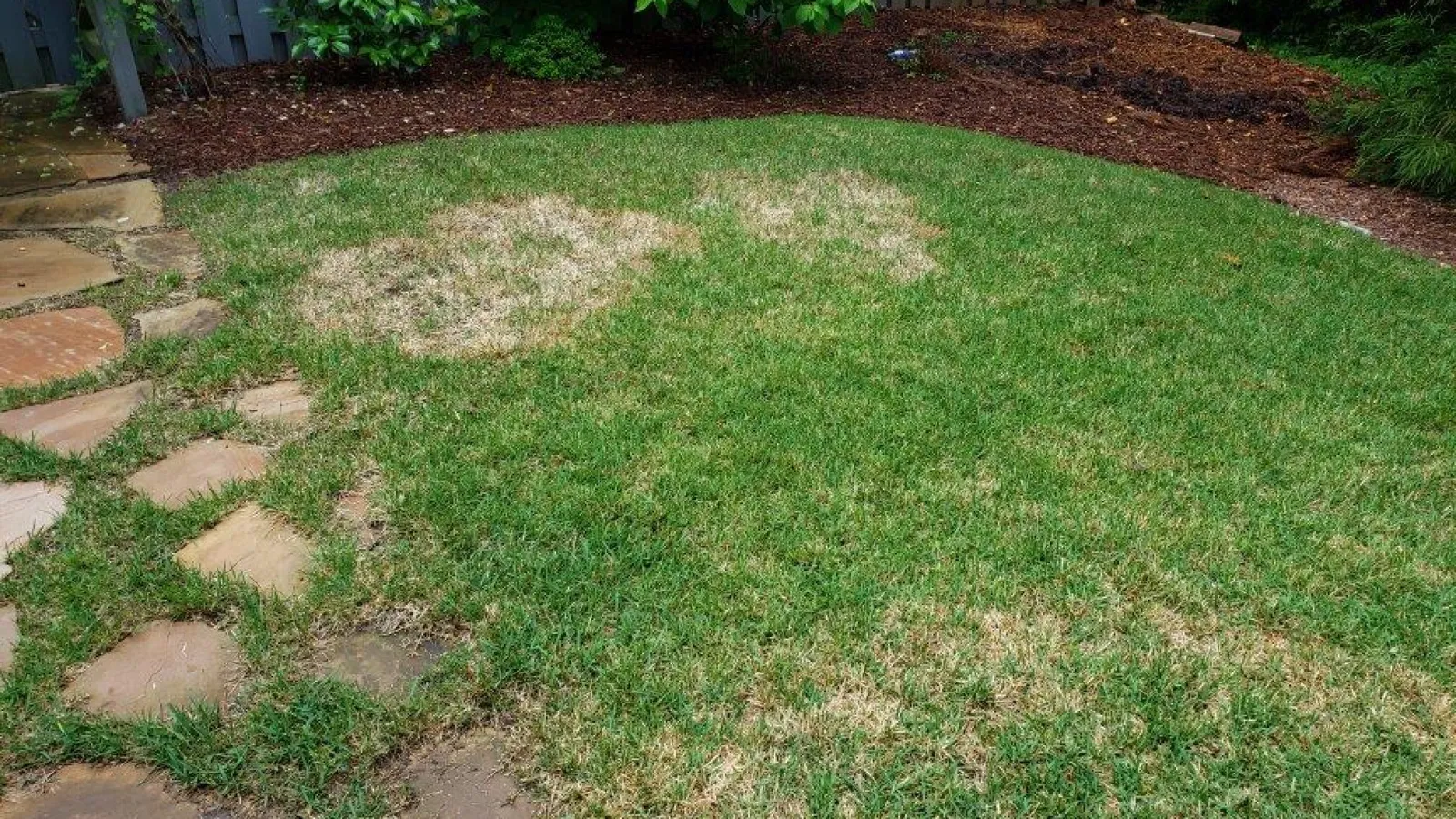
Large Patch
- Found in Bermuda
- Active in spring and fall (warm days, cool evenings) when the lawn is coming out or going into dormancy
Caused by R. solani, the same fungus as Zoysia Patch. The first sign of large patch fungus is discolored circular areas in your grass with yellow or orange borders. The affected areas will thin, and the grass leaves may look bleached or yellow.
- Active in spring and fall (warm days, cool evenings) when the lawn is coming out or going into dormancy
Caused by R. solani, the same fungus as Zoysia Patch. The first sign of large patch fungus is discolored circular areas in your grass with yellow or orange borders. The affected areas will thin, and the grass leaves may look bleached or yellow.
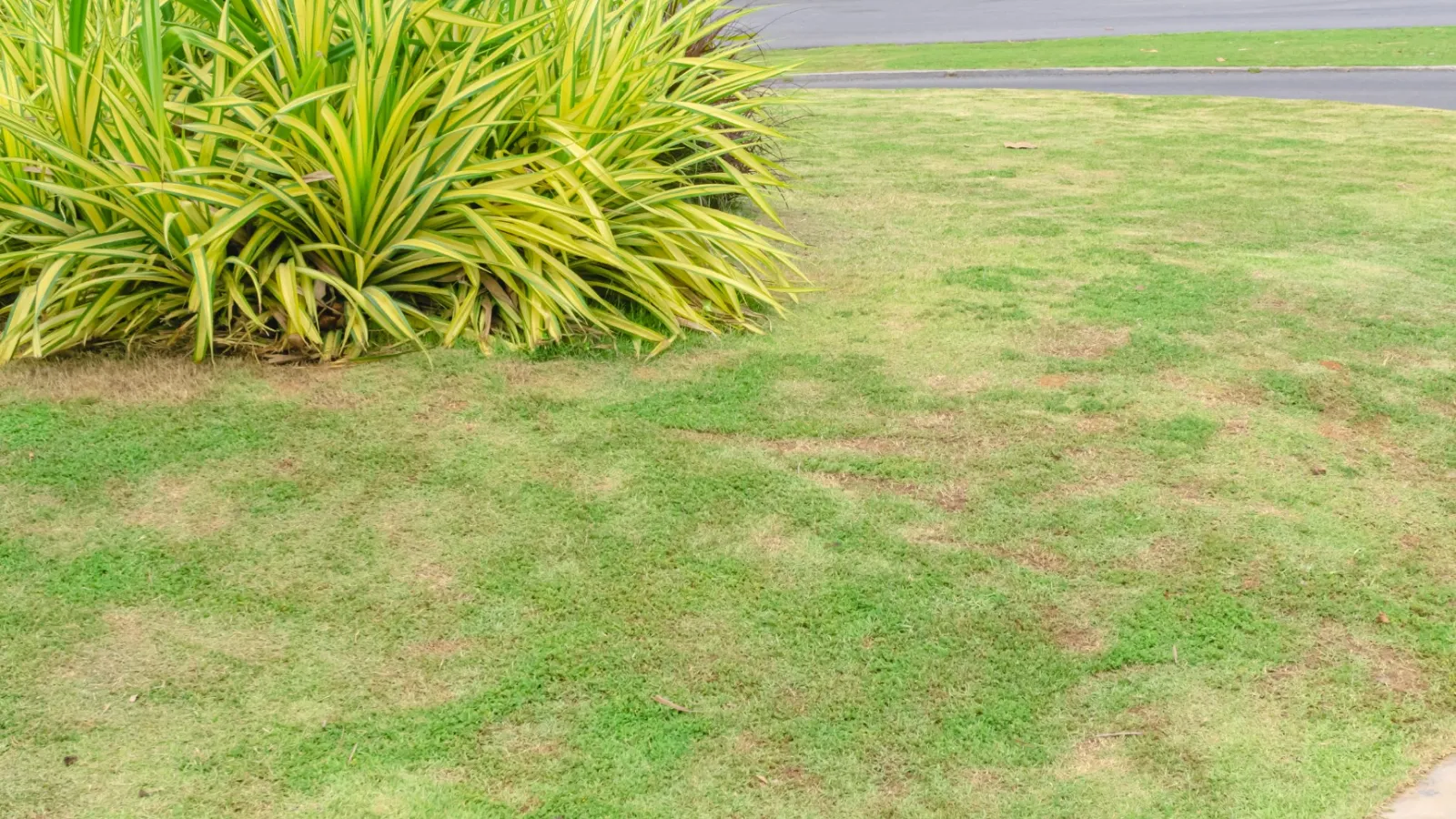
Leaf Spot
- Found in Fescue and Bermuda
- Active during summer
Leaf spot (caused by Drechslera poae) is a summer disease that requires long dew periods, warm evening temperatures, and ample precipitation to establish and spread. The disease is spread by wind-blown and rain-splashed spores and it survives among infested debris in thatch and on the turf.
- Active during summer
Leaf spot (caused by Drechslera poae) is a summer disease that requires long dew periods, warm evening temperatures, and ample precipitation to establish and spread. The disease is spread by wind-blown and rain-splashed spores and it survives among infested debris in thatch and on the turf.
Leaf Spot/ Melting out
- Found in Fescue, Bermuda, and Zoysia
- Active in spring
During the melting out stage, the crowns and roots are severely damaged, which causes the turf to thin out and die. And because it gives lawns a dried-out appearance, melting out is often mistaken for drought damage. Melting out (caused by Bipolaris sorokiniana) typically appears in April and May during cold, rainy weather.
- Active in spring
During the melting out stage, the crowns and roots are severely damaged, which causes the turf to thin out and die. And because it gives lawns a dried-out appearance, melting out is often mistaken for drought damage. Melting out (caused by Bipolaris sorokiniana) typically appears in April and May during cold, rainy weather.
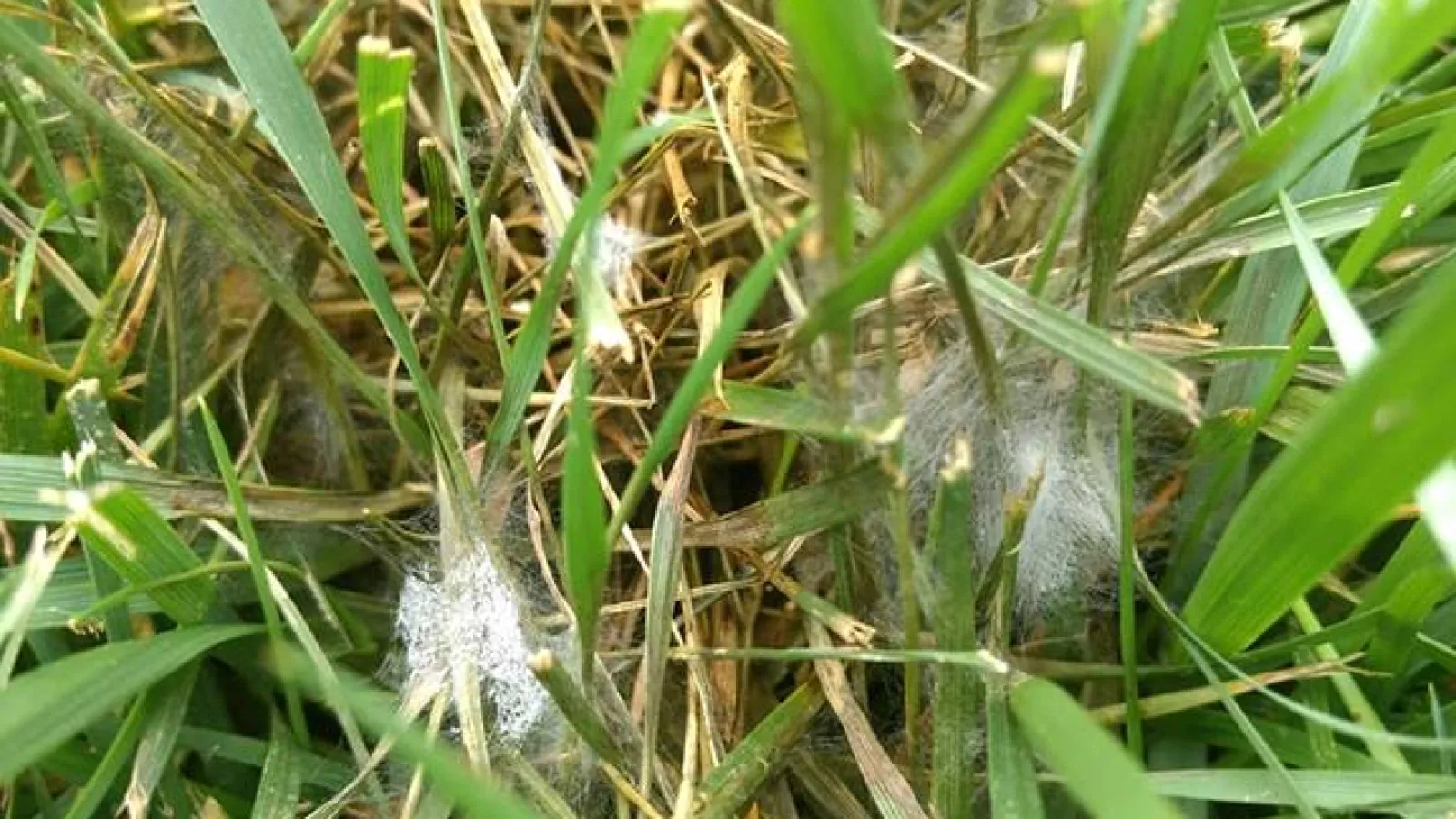
Pythium blight
- Found in Fescue, Zoysia, Bermuda
- Active in summer
Pythium blight, or "cottony blight," refers to the cotton candy-like growth of white, fluffy mycelium. It is most likely present in the morning after a night of rain or heavy dew.
- Active in summer
Pythium blight, or "cottony blight," refers to the cotton candy-like growth of white, fluffy mycelium. It is most likely present in the morning after a night of rain or heavy dew.
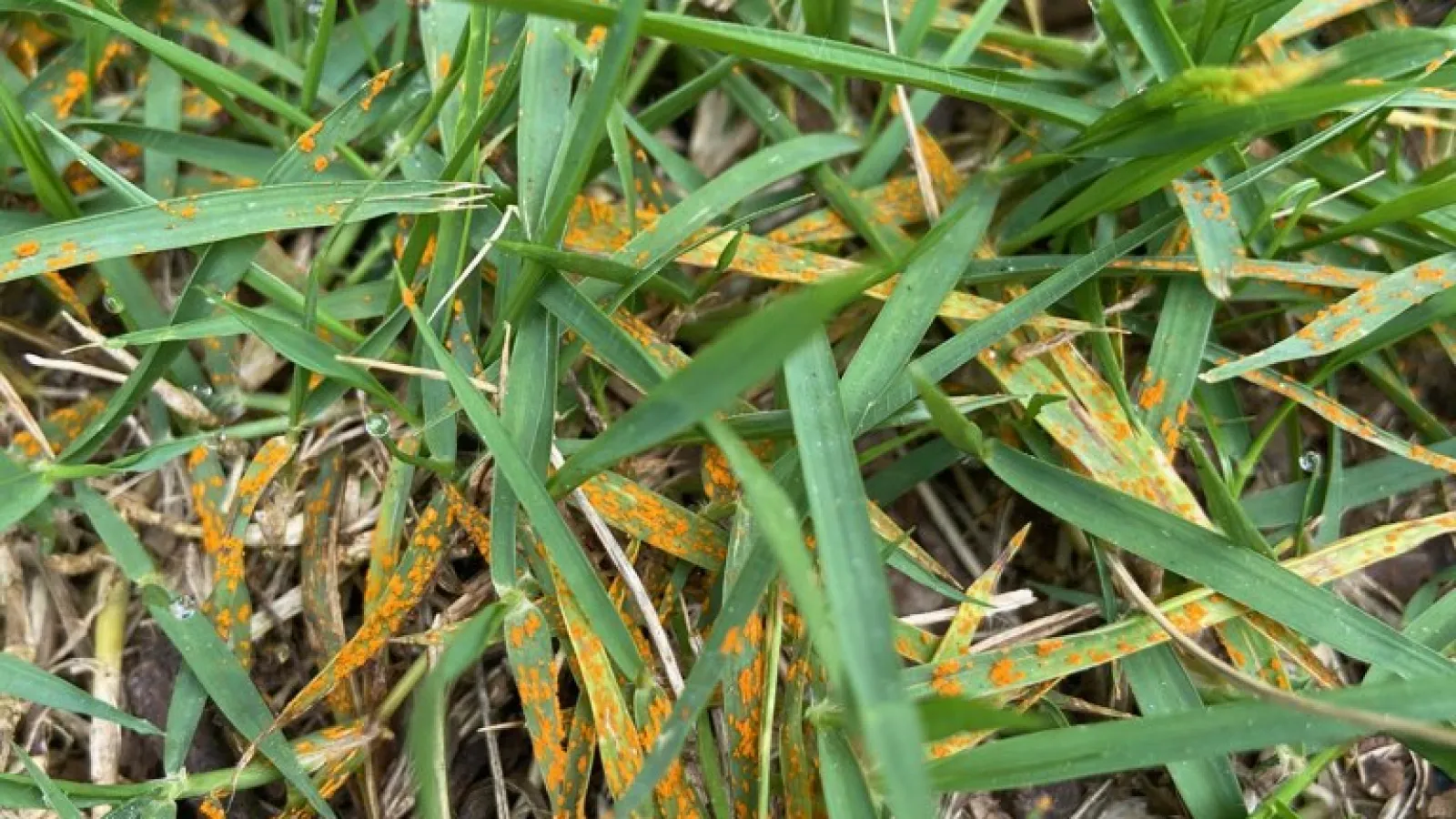
Rust Fungus
- Found in Fescue and Zoysia
- Active late spring through fall in Zoysia and year-round for Fescue
Patches of thin and weak-looking grass are signs of lawn rust. Another sign of lawn rust is an orange color on your shoes when walking in the grass. You can test by pulling a small portion of grass from the soil. You have lawn rust if coated with orange-red to yellowish-brown dust or spores.
- Active late spring through fall in Zoysia and year-round for Fescue
Patches of thin and weak-looking grass are signs of lawn rust. Another sign of lawn rust is an orange color on your shoes when walking in the grass. You can test by pulling a small portion of grass from the soil. You have lawn rust if coated with orange-red to yellowish-brown dust or spores.
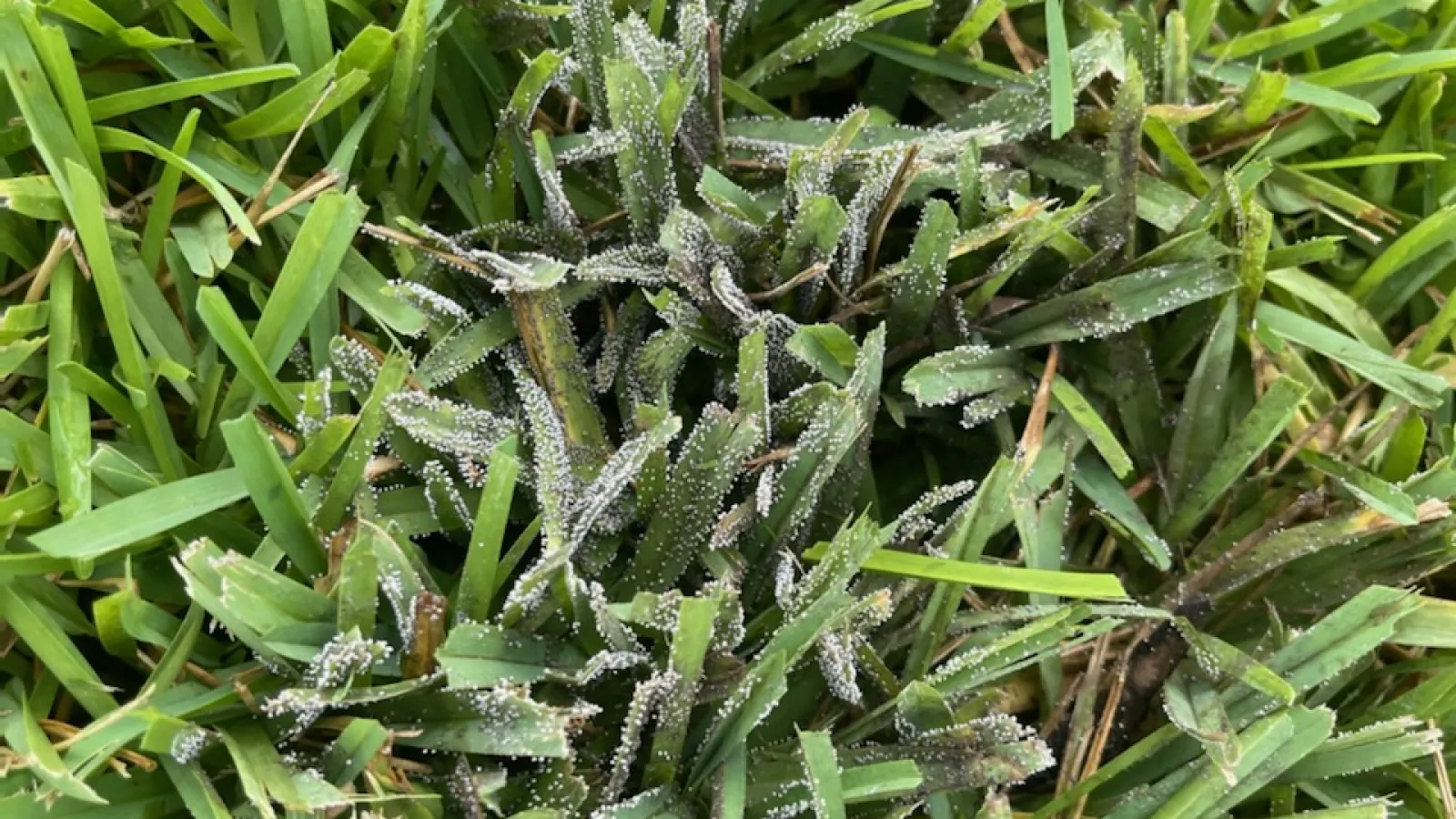
Slime mold
- Found in Bermuda, Fescue, and Zoysia
- Active in late spring and summer
Slime mold doesn't cause damage and lives on the surface of your grass. In fact, it can be beneficial. As it creeps across the leaf blade, it eats dead organic matter, bacteria, and other molds.
- Active in late spring and summer
Slime mold doesn't cause damage and lives on the surface of your grass. In fact, it can be beneficial. As it creeps across the leaf blade, it eats dead organic matter, bacteria, and other molds.
Spring Dead Spot
- Found in Bermuda and Zoysia
- Active in the winter but damage observed in spring
Spring dead spot appears as multiple circular patches of dead, bleached grass in the spring. The grass at the center of the patch is completely deteriorated and usually colonized by weeds. Sharp edges between dead and healthy grass are observed once turfgrass greens up in spring.
- Active in the winter but damage observed in spring
Spring dead spot appears as multiple circular patches of dead, bleached grass in the spring. The grass at the center of the patch is completely deteriorated and usually colonized by weeds. Sharp edges between dead and healthy grass are observed once turfgrass greens up in spring.
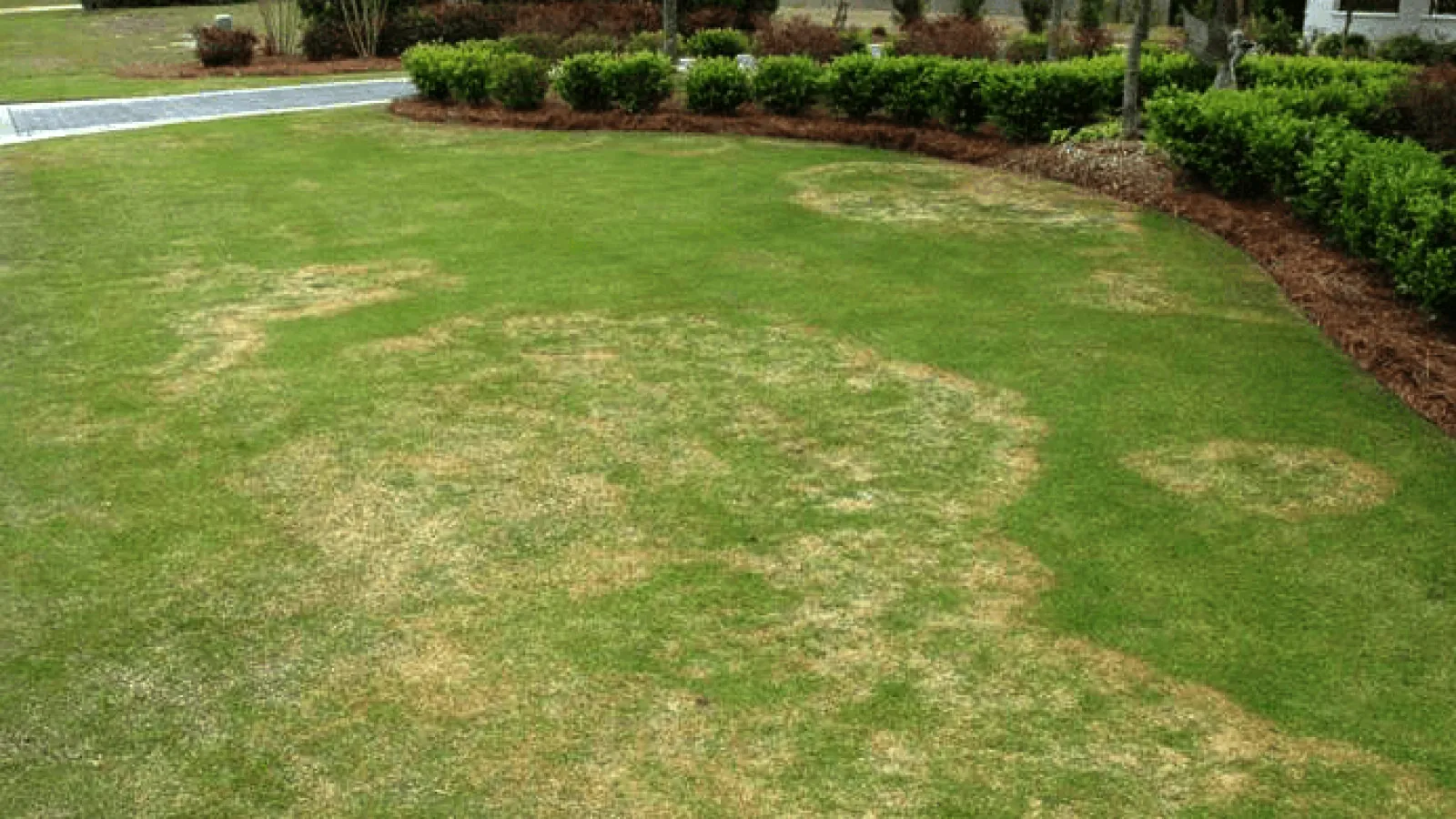
Turf Masters
Zoysia Patch
- Found in Zoysia
- Active in spring and fall (warm days, cool evenings) when the lawn is coming out and going into dormancy
Rhizoctonia solani is in the soil at all times and causes Zosia Patch. Environmental conditions like excessive thatch, compaction, and poor drainage encourage fungus. Oddly, it doesn't produce spores like other fungi, but rather it spreads through the movement of infected plant parts or by equipment, people, animals, water, or wind.
- Active in spring and fall (warm days, cool evenings) when the lawn is coming out and going into dormancy
Rhizoctonia solani is in the soil at all times and causes Zosia Patch. Environmental conditions like excessive thatch, compaction, and poor drainage encourage fungus. Oddly, it doesn't produce spores like other fungi, but rather it spreads through the movement of infected plant parts or by equipment, people, animals, water, or wind.
